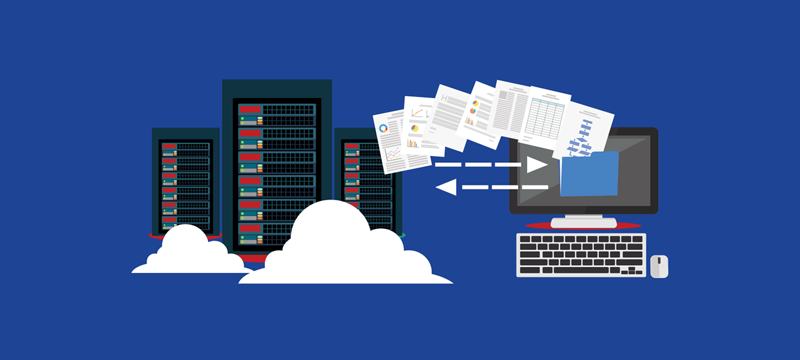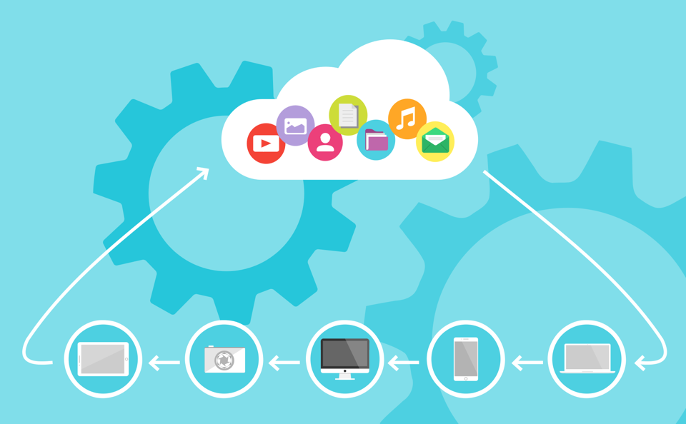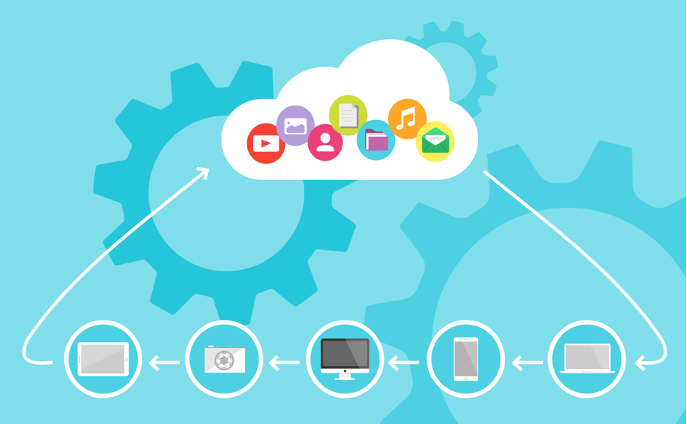We’re in the middle of a technological revolution. The way we interact with one another, how we do business, and our lives have all been transformed. But one of the most exciting developments has been the emergence of cloud computing technology. It has revolutionized businesses by allowing them to quickly and easily access data, applications, and services from anywhere. And if you want to take full advantage of the cloud revolution, you need to know about what is a cloud-first strategy.
What Is A Cloud First Strategy?
A cloud-first strategy is an approach to digital transformation that puts the focus on utilizing cloud computing technology as the primary platform for any future IT investments. This means the physical hardware infrastructure of businesses is no longer limiting them. Instead, they can take advantage of powerful computer resources in the cloud.
This can help companies reduce costs and improve operational scalability. Also, it can help with gaining competitive advantages over other businesses not leveraging this new technology.
Benefits

There are many benefits to taking a cloud-first approach.
Firstly, cloud technology is incredibly cost-effective and scalable. This allows businesses to access the resources they need without having to invest in expensive hardware.
Secondly, cloud services are far more secure than traditional IT infrastructure. So, the companies looking to protect their data find them an attractive option.
Finally, using a cloud-first strategy can provide businesses with greater flexibility. Especially when it comes to managing workloads across multiple platforms or users.
Best Practices For Implementing A Cloud First Strategy

In order to successfully implement a cloud-first strategy, there are some important best practices that should be followed.
Firstly, you need to ensure that your staff has the right training and skillset. So they can use the new technology effectively.
Secondly, you need to make sure that your cloud environment is designed and configured in a way that meets your specific needs.
Finally, you should consider the cost of investing in cloud services versus traditional IT infrastructure – as this could significantly impact your bottom line.
The Future Of A Cloud First Strategy

As cloud computing technology continues to develop, so will the potential for businesses to take full advantage of this revolutionary platform.
With greater flexibility and scalability than ever before, businesses can quickly and easily access data, applications, and services from anywhere in the world. And with a well-thought-out cloud-first strategy, any business can reap the rewards of going digital.
AiNET is a leading provider of secure cloud storage and fiber optic internet services. Our solutions are designed to meet the needs of businesses, offering fast, reliable internet connectivity and scalable cloud storage.
To learn more about our comprehensive range of products and services, please visit AiNET today.
We know the Cloud has been an excellent tool for businesses over the years, but it didn’t really take off for schools until the Covid 19 pandemic in 2020. While online schooling was a necessary evil during the pandemic, the availability of the Cloud in education has been extremely beneficial. Forbes even published this article showcasing the best online learning platforms, whether you’re a high school student or professional looking to learn new skills. Let’s take a look at all the ways you can utilize the Cloud for your education!
1. Use the Public Cloud to Collaborate with Classmates
With resources like Google Cloud and Drive, it is easier than ever for you or your child to work on group projects. Multiple people can work on the same document in real time, and upload it once it’s finished. Now, we don’t have to find time to meet to work together, and can instead get things done no matter where you are. This would not be possible without cloud computing!

2. Online Learning Flexibility
Did you or your child have to go online during the pandemic? You’re not alone—in 2020, 5.4 million college students (74%) took at least one class online. For some, it was a struggle. For others, it was the answer to a problem they didn’t even know they had. If online learning works best for you, you’re in luck! Many colleges and universities now offer classes that are either fully remote and online, or a hybrid. You can even take some classes on campus and some online, depending on your schedule. There are many schools that offer fully online degrees as well, such as SNHU. All of these options utilize public, private, or hybrid cloud computing.

3. Improve Disaster Recovery and Cut Costs
Are you an educator or work in the school system? If so, you may be interested in looking into moving infrastructure to the cloud, as Harry Doctor Jr. describes in this EdTech article. With school districts utilizing hybrid cloud services, they can save money and protect data from disasters such as storms. Think about all the information just one school contains, much less entire districts! It makes far more sense to have it secure and protected in the Cloud.

Ready to get started? Whether you’re an educator, a student, a parent, or work in IT, AiNET has got you covered for all your cloud computing needs.
Cloud computing has been a transformative technology that has revolutionized how businesses operate. But there are several persistent cloud computing myths keeping businesses from fully embracing its benefits.
However, these misconceptions shouldn’t strike uncertainty to cloud your judgement and impede your business growth.
In this blog post, we have thoroughly researched and debunked the most common myths surrounding cloud computing so you can make an informed decision. Let’s hop in!
Myth: Cloud Computing is Complex and Difficult to Manage.
Debunked: Some businesses tend to shy away from cloud computing, believing it’s complex and difficult to manage. However, cloud computing can simplify IT infrastructure management. Cloud providers like AiNET offer user-friendly interfaces and management tools that make deploying, managing, and monitoring your applications and data in the cloud easy.
Myth: Cloud is Less Secure than On-premises Computing.
Debunked: This is a common myth. In reality, cloud service providers (CSPs) like AiNET employ various security measures. They have the resources to implement robust security controls to protect sensitive data, such as encryption, access controls, and data backup and recovery. With such proper security measures in place, cloud computing can be a secure option for storing and processing sensitive data.
Myth: Cloud Computing is Always Cheaper than In-house Infrastructure.
Debunked: Cloud computing can be attractive for businesses with limited budgets or those looking to scale rapidly. However, it is not necessarily cheaper than on-premises computing — especially in the long run. It is crucial to consider factors such as usage patterns, data storage needs, and application requirements when evaluating the total cost of ownership.
Myth: Cloud Computing is Only for Data Storage.
Debunked: This long-standing myth is a birth of the lack of knowledge and understanding. While cloud computing is often used for data storage, it can also be used for various other applications. The use cases may include software development, testing, and deployment, as well as running applications and services.
Myth: Cloud Computing is Only for Large Organizations.
Debunked: From small businesses to large enterprises, cloud computing can benefit organizations of all sizes. In fact, many cloud services are specifically designed to meet the needs and budgets of small and medium-sized businesses.
Embrace The Future With AiNET!
Cloud computing has come a long way, and it’s time to dispel the misconceptions hindering your growth. Unlock the pure power of your business with AiNET — your trusted partner in cloud computing.
We at AiNET are diligent cloud service providers, offering world-class cloud computing solutions with unparalleled service and support. With AiNET, you get a high-speed connection coupled with robust redundancy and disaster recovery measures.
Contact AiNET today to join forces and experience the true power of cloud computing.
Here at AiNET, we spend a lot of time discussing cloud computing. How far it’s come, where it’ll go, and how to utilize it. But right now, it’s time to take a step back and appreciate what the cloud does for us as a society.
1- The Cloud Keeps Your Business Afloat

We know the saying goes, “the multitude is always wrong,” but that’s not the case with cloud computing. In fact, it’s taken off so much that Forbes wrote about how 90% of companies utilize it. If you don’t use the cloud in your own business, you’re in danger of going under or becoming irrelevant, especially if you lose your data. (We all know how the cloud protects it!) Take a moment to think about where your company would be without cloud computing. Pretty different, right? And much less convenient!
2- The Cloud Has Options

Before, and in the early days of cloud computing, you didn’t have much of a choice in how to back up your data. Now, the cloud’s flexibility means you can utilize a public, private, or hybrid model—or all three! (Wondering which option is right for you, whether it’s for business or personal use? Click here). And, you have the option to access your data at home, work, vacation, or wherever you are.
Talk about a game changer! Especially during the Covid-19 pandemic, where businesses were required to work from home. Our lives would have been drastically different during that period without the cloud.
3- The Cloud Makes Life Easier

Overall, the cloud has changed our lives simply by making it easier to work and preserve important data. No more stressing if the power goes out, or wondering how you’re going to pay for storage space or infrastructure. Cloud computing is cost-effective and usually easily transferrable—a win-win. While it’s not foolproof and does take some time and planning to get started, the cloud is far better than any option before, and allows technology to advance into the future. So next time you’re using the cloud, don’t take it for granted!
Excited about cloud computing again? Explore our services here at AiNET!
The past decade has been an iconic one for cloud technology. We made the most advances, and it’s paid off quite well. These innovations have made cyber solutions feasible for users and companies worldwide.
Along with the remarkable transformation came an unexpected decline in cloud tech solutions. Still, the pros outweigh the con. Here’s a detailed discussion of both sides.
The Major Pros from the Past Decade
1. The Hybrid Cloud Boom
The Hybrid cloud phenomenon was a dream come true for companies looking to retain solid control over their computing servers and exploit the transformative resources of the public cloud. It was the balance major companies needed.
For most companies, the public cloud was an active backup program to help prevent overloading their servers. Eventually, it became a proportional fuse of on-premise IT and cloud computing resources.
The Hybrid gained and has maintained significant momentum over the years. It’s currently the most used cloud storage and computing solution.
2. Cloud Backup and Recovery
It’s no secret that the cloud was primarily a backup storage option in its early days. And even at that stage, many users never really trusted the cloud to make it their primary storage platform.
However, that changed very quickly after notable companies like Rackspace announced moving their storage space to the cloud. Even then, the most significant rise in the general use of cloud storage services happened with the introduction of the cloud disaster recovery program.
Cloud disaster recovery was the game changer for cloud service providers and everyone else. The idea of backing up data beyond the reach of natural disasters became the ultimate solution to the most widespread business obstacle—data loss.
The Only Con from the Past Decade
The Public Cloud Growth Glitch
The glitch, in this case, isn’t a disruption in the services enabled by cloud technology. It’s the decline we noted earlier. Even with all the transformative advancement attached to the progressive years of cloud technology, the public cloud is losing its initial appeal.
Medium-sized companies are leaving the public cloud at an alarming rate and moving on to set up on-premise IT infrastructures for their businesses.
What’s the cause of this reverse?
Oligarchy
There’s a monopoly of cloud services championed by tech oligarchs, also known as tech giants. Amazon, Google, and Microsoft are the most prominent ones, and their cloud solutions aren’t cheap.
For many medium-sized companies, running an on-premise IT setup is more profitable than paying a fortune annually to tech giants with a growing risk of a potential breakdown.
Here’s a more detailed analysis of cloud tech oligarchs ruining the public cloud.
Conclusion
Despite the slight setback, cloud technology is growing at an incredible pace. There’s more to come with cloud services, and at AiNET, we’re exploring how you can benefit from the current and forthcoming innovations. Want to get started on your cloud solutions? Get in touch with us now.
Artificial intelligence is nothing new. Self driving cars, robots that can talk like normal human beings, even face ID – something that you might be using every single day is part of artificial intelligence. In the beginning, people considered businesses using AI incredibly advanced and powerful to a level where it shocked people.
However now, many consider the businesses that do not include AI in their products and services “just another business that will soon disappear”.
With AI interfering in almost every aspect of our lives, it’s not a surprise that it has made its way to cloud computing too!
With the merging of the two, many lives – and with many I mean millions – were improved.
If you feel confused, here are 3 of the most famous examples where AI merging with cloud computing has given us something very useful:
- Siri
- Alexa
- Google Home.
With these tools, we are now able to make a purchase, set up reminders, play a song, and even adjust the home temperature without even having to lift a finger!
So, what does Artificial Intelligence Really do in Cloud Computing?
Now that we went over couple of amazing things AI has done for us, what is its role in cloud computing? When working with a large set of data, you know how important and useful machine learning models are. With these models, (just like its name explains), the different patterns are stored and used for a better forecasting i.e. accuracy is increased.
Apart from machine learning, you have many services available for IT and developers. With the power it holds when mixed together, let’s take a look at some of the benefits it can provide:
Low costs
One of the biggest advantages cloud computing and artificial intelligence can provide for businesses is decreasing the cost. With using AI, you no longer need to spend money on hardware, maintenance or on-site data centers
In addition, given the ability of machine learning, with no human intervention, it can bring the necessary analysis to life at any second needed.
Better insights
Imagine getting accurate forecasting, well informed and quick data analysis, and real time solutions each time you need it. With these benefits, the use of AI can only cause improvements.
Reliability
With the use of cloud computing, you no longer have to worry about damages, theft, risks and failures. Since everything is in the cloud, your business continuity is not only guaranteed but also improved, faster and easier. What’s great is that the using AI improves the security of the cloud. Therefore, you do not have to worry about hackers and security issues.
With the mixture of AI into Cloud computing, your requests will not only be heard but also become reality.
You can learn more about AI and its role in cloud computing by doing just one simple step! Click on AiNET and we’ll direct you to a blog world that will blow your mind!
Productivity is always considered to be one of the main factors to focus on, ask any business owner. No matter what type of business you are in, it is important to ensure that you are producing optimal results. This is where cloud computing can sweep in and save you. But how?
You might’ve heard about cloud computing, but many don’t really understand it. It might be even a shock when I say that cloud computing not only helps you be more productive, but it also saves time and money, helps you with data recovery, and is even better for the environment. Yes, for the environment! But for now, we will focus on the productivity part. Let’s get into it.
1. Helps you save time
To be more precise, a good cloud computing service provider will take care of most issues you face. We are talking security problems, software updates, and even most of IT maintenance work. For example, if your software device is in need of updates, you will dedicate your time to it. However, with a good cloud computing service provider, you don’t even need to lift a finger. It is all taken care of, and you can dedicate your time to more important things.
Cloud computing provides you a cutting-edge solution for most of your IT needs. It’s flexible, scalable, and fast. On the other hand, on certain occasions, control over the physical server may deem to be necessary. A hybrid model aims to make the most out of each infrastructure and run your organization seamlessly.

2. Resists disaster
Imagine constantly stressing out whether you will suddenly lose all your documents, images, and all the important stuff. The stress alone effects your productivity. However, with cloud computing, you don’t. Take a breather because… you won’t.
A cloud computing service provider includes data back up and recovery systems. More and more of these systems are coming up with ways that are even more secure. For example, some of the services offer a cloned version of all your information just in case something goes south, and you lose all your information.

3. Improves collaboration
It is no secret that better collaboration means better productivity. When every team member is always in communication, it is natural that you will get better results. Let me explain. When you remove the time you put in sending files and documents back and forth thousands of times, you’ll get a time efficient workflow. What’s even more amazing is that you can have access to the relevant files not only anytime, but also anywhere! As long as you have the necessary tools, you’re good to go.

I promise, there’s more! Visit AiNET and you’ll see what I’m talking about.
Cloud computing is everywhere, and it’s available to almost everyone. As a business owner, moving your operations to the cloud might prove innovative if you utilize the Cloud technology properly.
Cloud technology helps maximize vital systems like storage, networking, database, analytics, designs, intelligence, and algorithms.
The cloud’s sphere is limitless, affordable, and dynamic. However, some organizations move to the clouds for renovating purposes only.
Why is that?
Well, operating on the Cloud, for such organizations, is an attractive and trendy strategy as it gives off an appeal of sophistication to both old and prospective clients.
But as you must have guessed, there is so much more to it.
The benefits that Cloud computing offers are tied to its architectural components. Understanding how these components work is vital to making the most out of any Cloud computing service.
Here’s a summary of Cloud computing architecture.

Cloud computing architecture is a mix of event-driven and service-oriented programs. The services enabled by Cloud technology are user-led—an arrangement where users’ goals serve as the nexus of computer applications.
So, the architecture come in two major categories:
Front End
Back End.
Front End.
To start with, the front end serves as the gateway to Cloud computing platforms. It allows users access, via a graphical interface, to computing services. A typical example of a front-end gateway is the Google Chrome browser.
Good front-end designs tend to boost users’ experience. So, if you’re looking to serve your clients via the web, make sure you have an uncomplicated and well-structured user interface.
Back End.
Secondly, the back end is strictly for service providers. Think of it as a behind-the-scenes setting. Here, resources are pooled and optimized to make sure every application and tool users interact with are of optimal quality and, of course, delivers.
Through the Back End system, service providers can manage security, data, storage, algorithms, traffic, servers, and on goes the list.
Both front-end and back-end mechanisms stay connected via the Internet. However, it takes a stable Internet connection on both ends (provider and user) to maximize these programs.
A complete overview of cloud computing architecture should include the following components.
- The Client infrastructure (graphical interface)
- Application (software and platforms)
- Service: SaaS, PaaS, IaaS
- Runtime environment
- Storage
- Infrastructure (software and hardware)
- Security
- Web management system
- Internet connection.
As mentioned earlier, Cloud computing is limitless in terms of storage and runtime, but an even better feature of cloud technology is its flexibility. Therefore, as a business owner, you can design the perfect mechanism for your company’s operations with this technology.
So, to get a standard and customized Cloud computing setup, contact our experts at AiNET, and we’ll get you started in no time.








